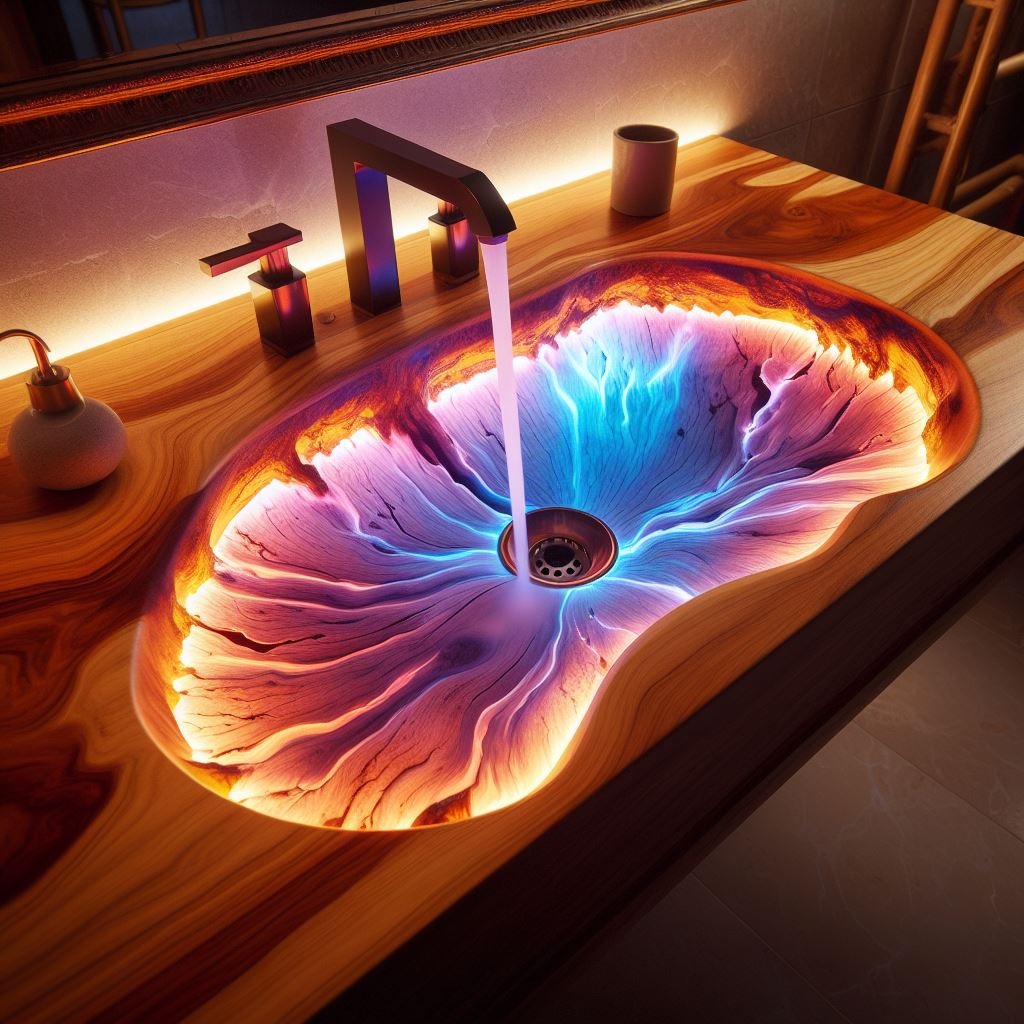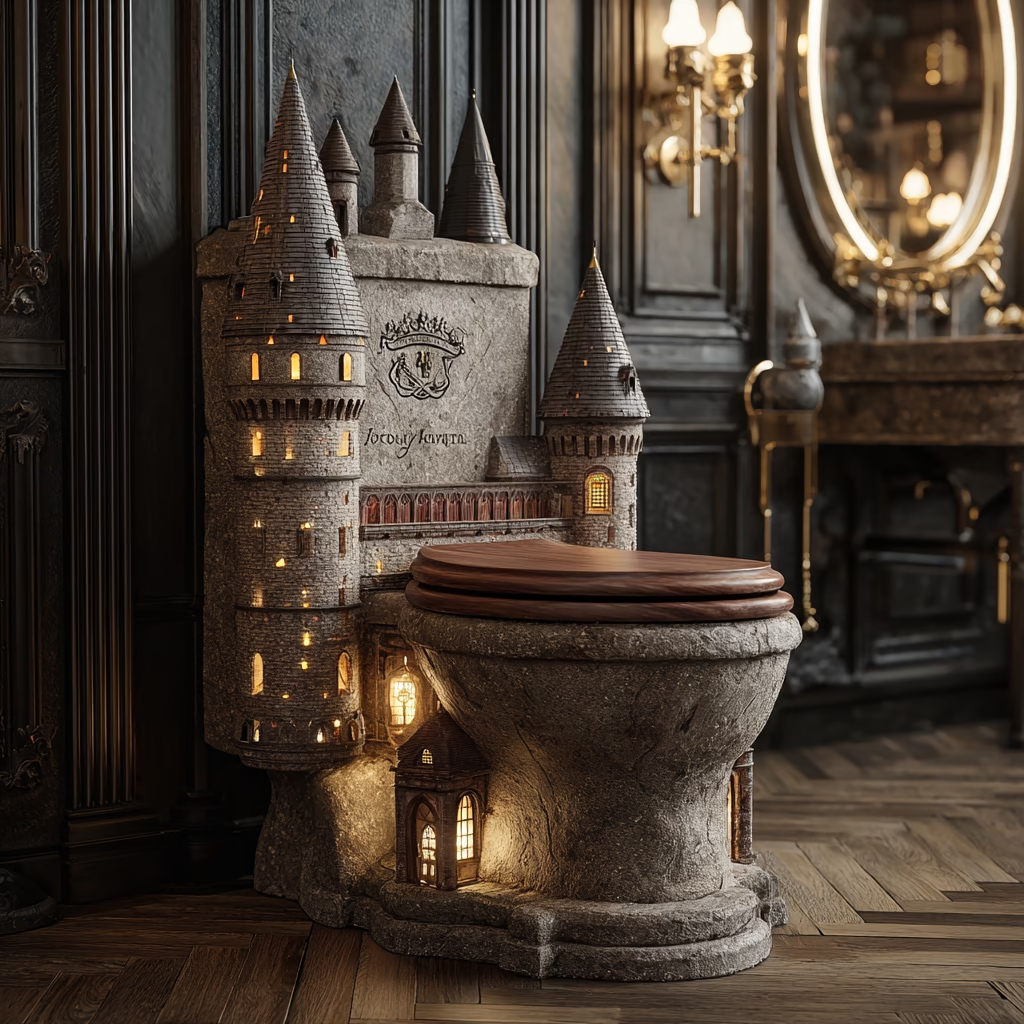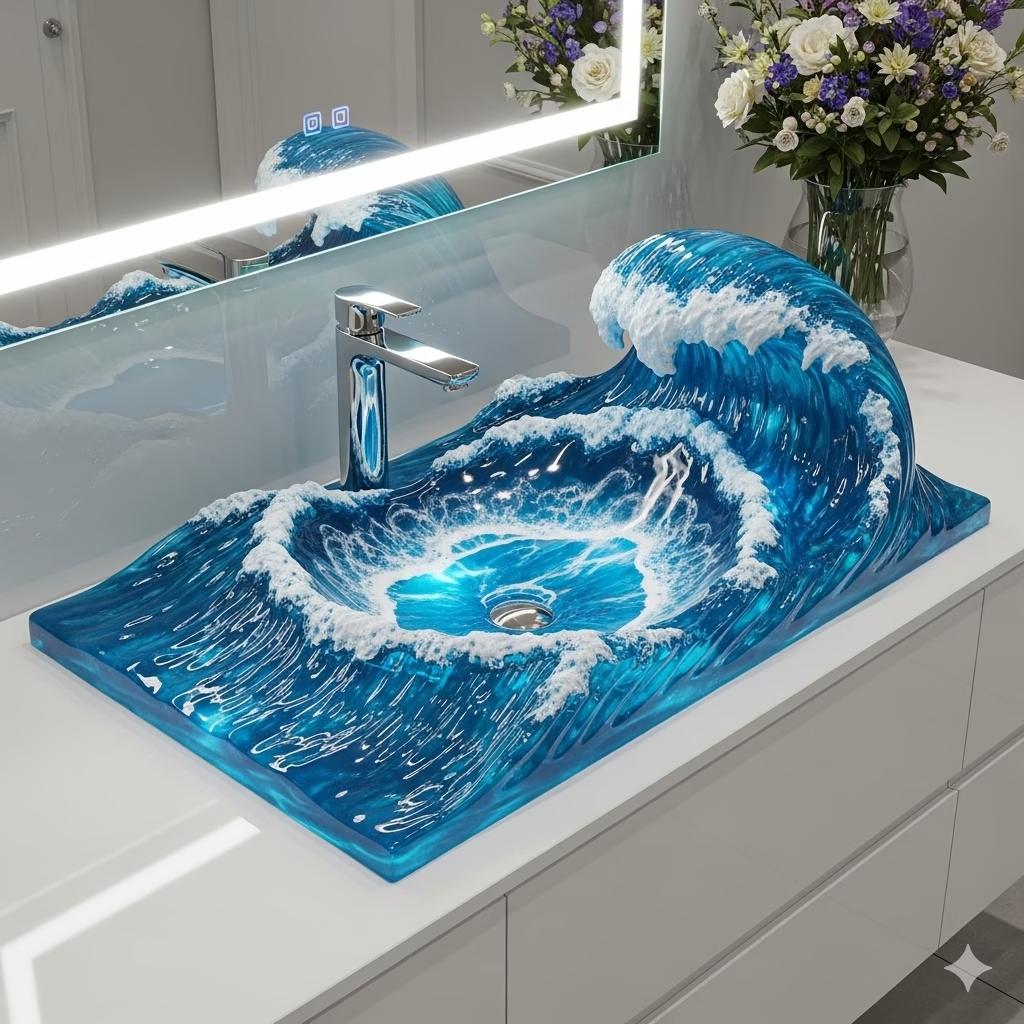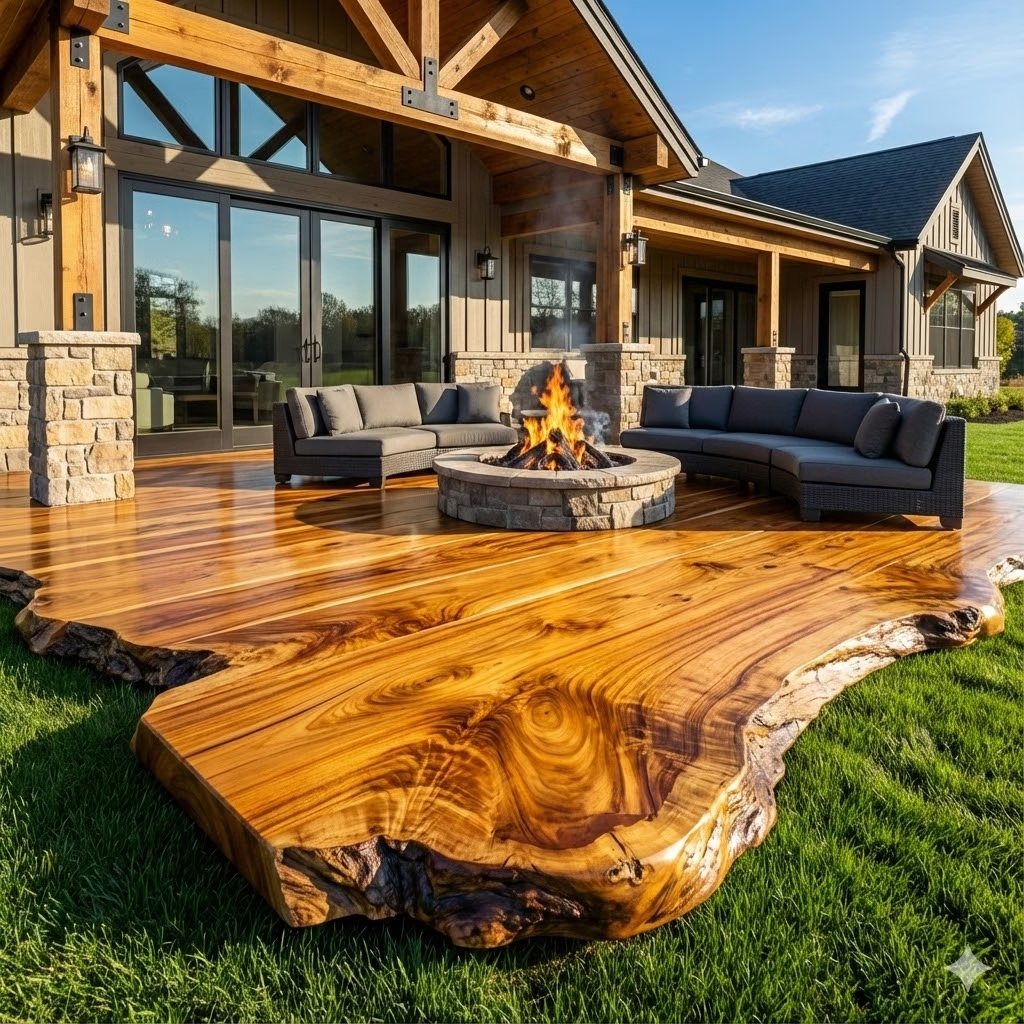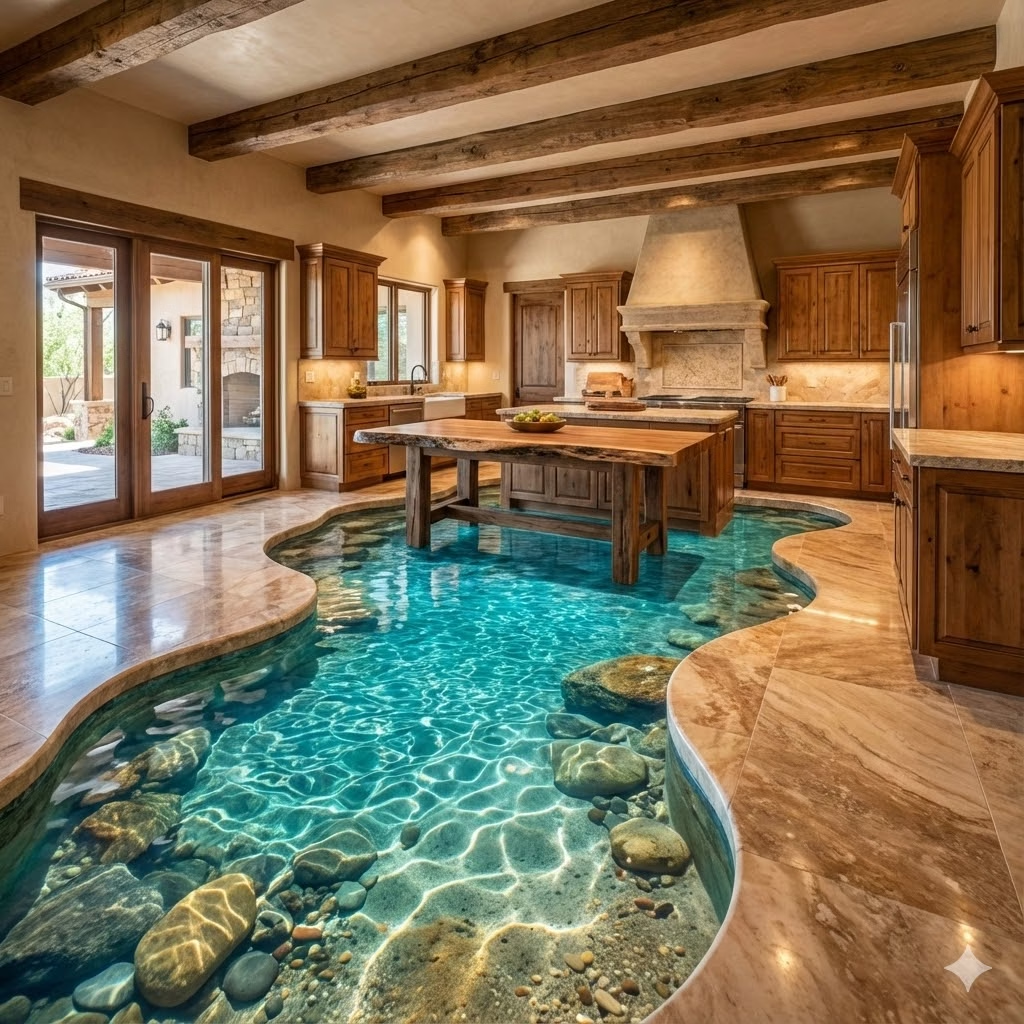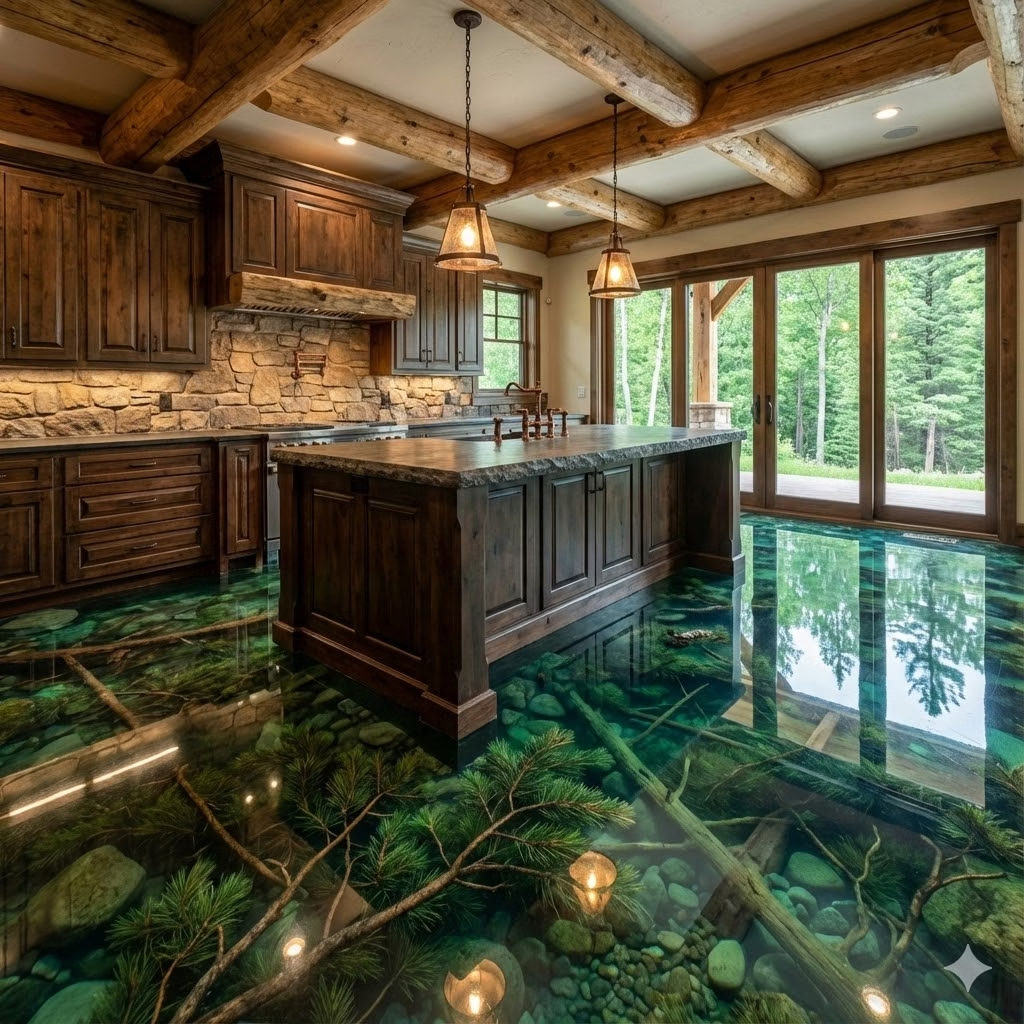In the realm of interior design and home decor, the marriage of traditional craftsmanship and modern innovation has sparked a renaissance in creative expression. Wooden sinks, once relegated to rustic themes or quaint cottages, have emerged as a focal point in contemporary interiors. But it’s not just the allure of natural wood that captivates; the integration of epoxy resin introduces a new dimension of durability, functionality, and aesthetic appeal.
The Timeless Beauty of Wooden Sinks
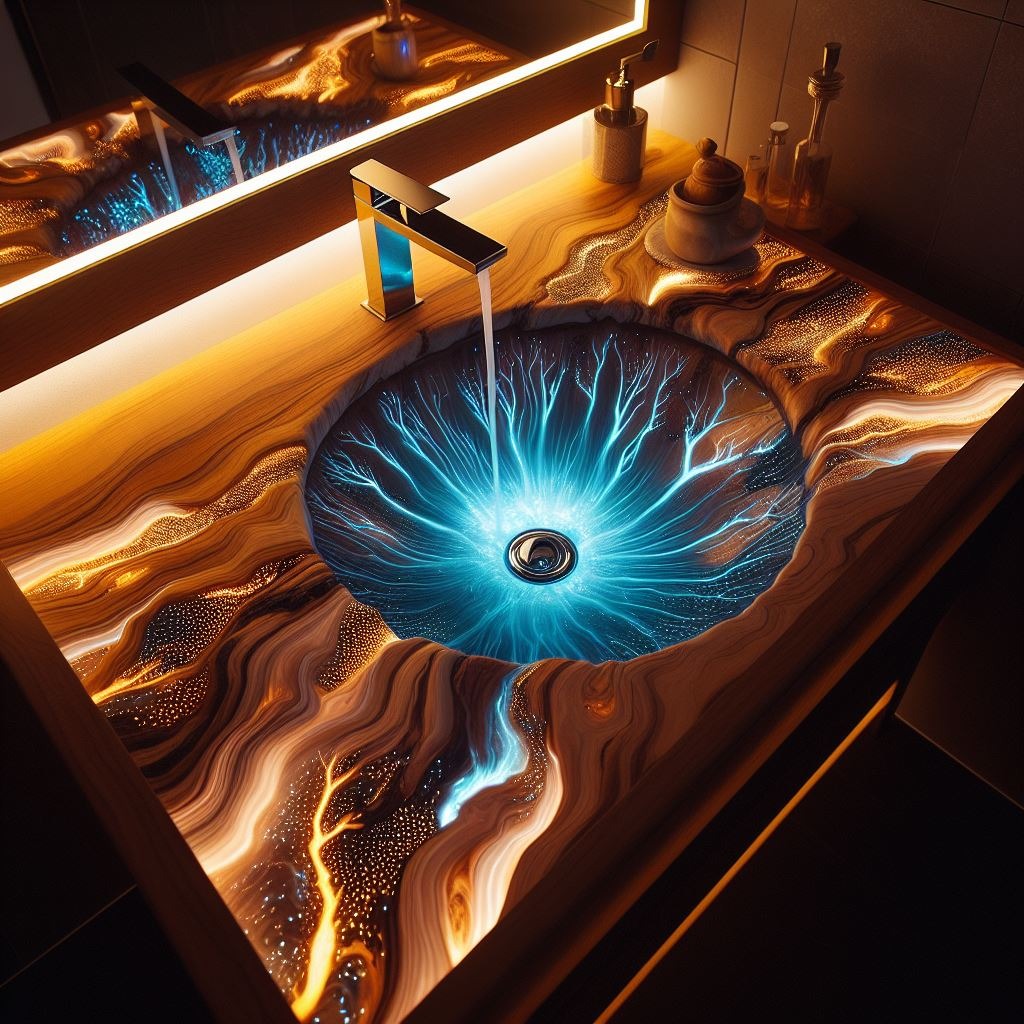
Wood, with its organic warmth and natural grains, has an enduring charm that transcends trends. From ancient civilizations to modern-day designers, wood has been revered for its versatility and timeless appeal. Wooden sinks embody this legacy, offering a unique blend of functionality and aesthetic elegance.
Crafted from various hardwoods such as teak, walnut, or oak, each wooden sink exudes its character and personality. No two sinks are alike, as the distinctive patterns and textures of the wood grain impart a sense of individuality to every piece. Whether rustic or contemporary in design, wooden sinks add a touch of warmth and sophistication to any space.
The Resurgence of Epoxy Resin

Epoxy resin, once relegated to industrial applications, has experienced a renaissance in recent years, thanks to its versatility and aesthetic appeal. Originally used for sealing and coating surfaces, epoxy has found its way into the realm of artistic expression, transforming mundane materials into stunning works of art.
When combined with wood, epoxy resin enhances its natural beauty while providing unparalleled durability and resistance to water damage. The transparent nature of epoxy allows the intricate patterns of the wood grain to shine through, creating a mesmerizing visual effect. Moreover, epoxy resin can be tinted or infused with various pigments, giving designers endless possibilities for customization.
The Fusion of Tradition and Innovation
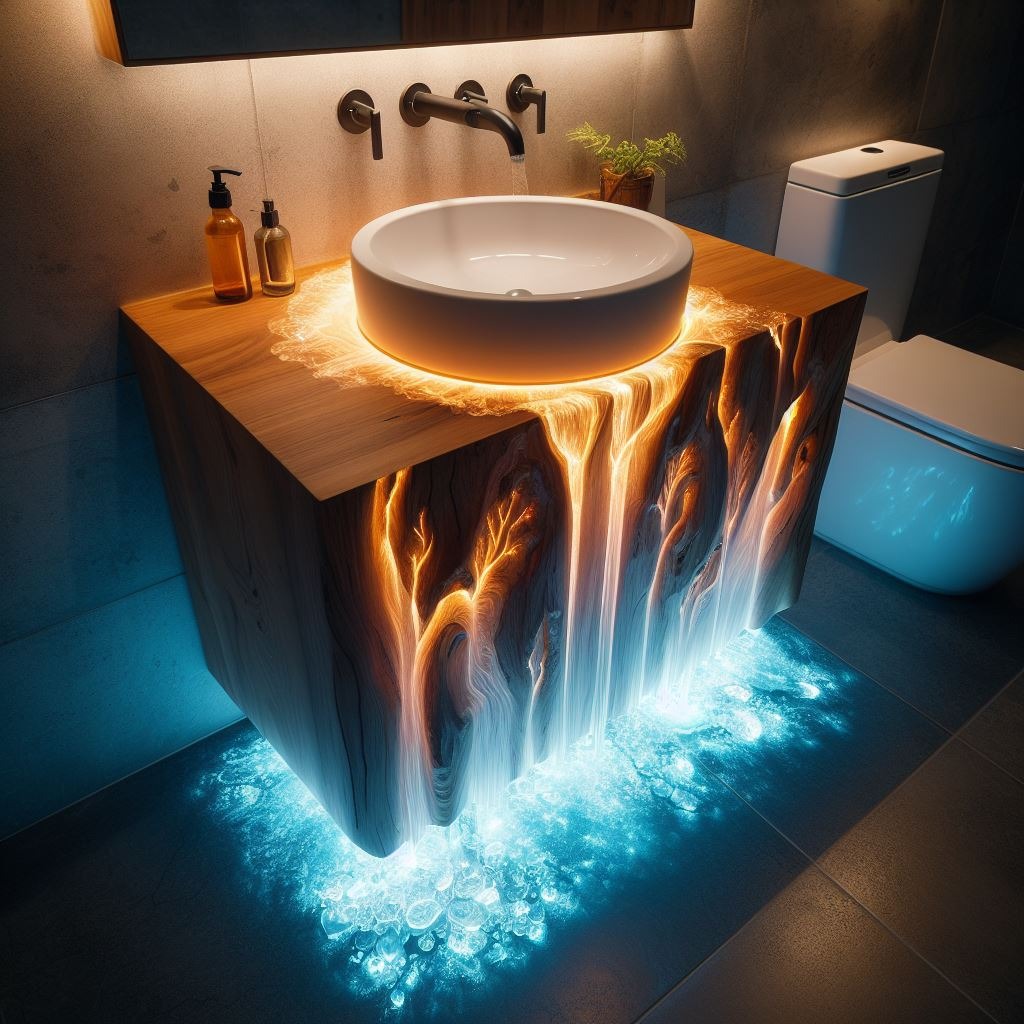
The marriage of wooden sinks and epoxy resin represents a harmonious blend of tradition and innovation. On one hand, the timeless appeal of wood pays homage to centuries-old craftsmanship and artisanal techniques. On the other hand, the integration of epoxy resin adds a contemporary twist, elevating wooden sinks to new heights of sophistication and functionality.
From a practical standpoint, epoxy resin seals and protects the wood from moisture, prolonging the lifespan of the sink and ensuring years of reliable service. Moreover, the seamless integration of wood and epoxy creates a smooth and hygienic surface that is easy to clean and maintain, making wooden sinks suitable for both residential and commercial settings.
Design Options and Customization
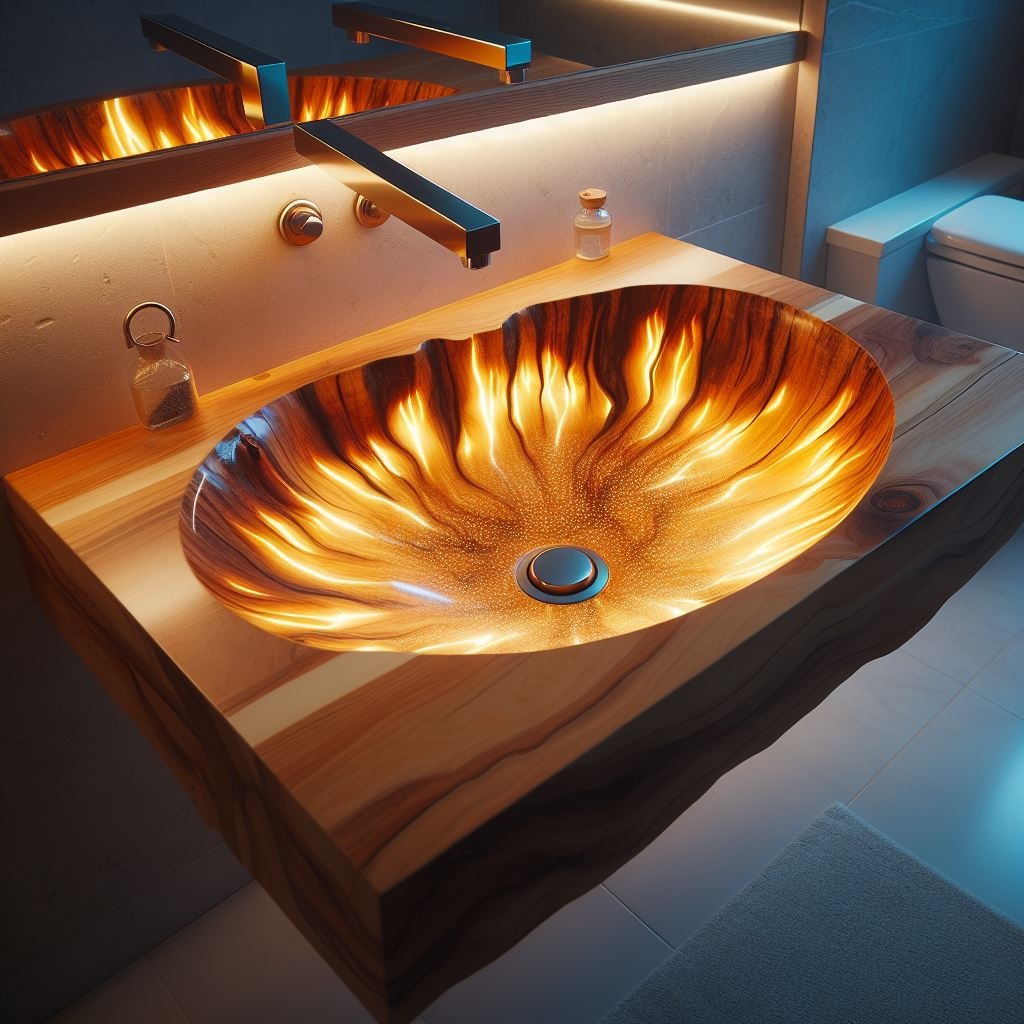
One of the most compelling aspects of wooden sinks with epoxy is the endless array of design options and customization possibilities. Designers can choose from a variety of wood species, each with its unique characteristics and hues. Additionally, the shape and size of the sink can be tailored to fit the specific requirements of the space, whether it’s a compact powder room or a sprawling master bathroom.
Furthermore, epoxy resin offers unparalleled freedom for artistic expression. Designers can incorporate decorative elements such as embedded stones, shells, or even LED lights to create truly one-of-a-kind pieces. The translucent nature of epoxy allows for stunning visual effects, such as the illusion of floating objects or swirling patterns reminiscent of marble.
Environmental Considerations
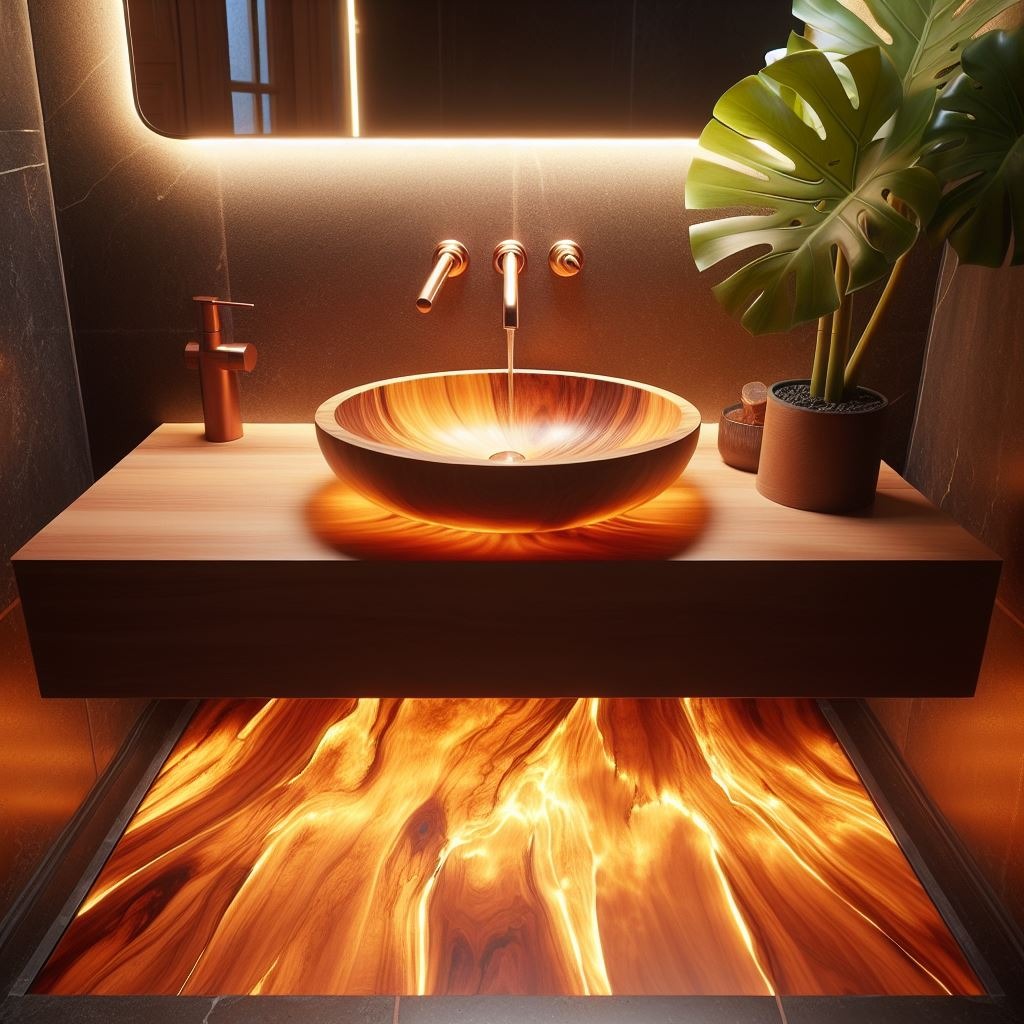
In an era of increasing environmental consciousness, wooden sinks with epoxy resin offer a sustainable alternative to traditional materials. Unlike plastic or ceramic sinks, which are manufactured using non-renewable resources and harsh chemicals, wooden sinks are crafted from natural, biodegradable materials.
Moreover, wood is a renewable resource that can be responsibly harvested and replanted, ensuring the long-term sustainability of the industry. By choosing wooden sinks with epoxy resin, consumers can reduce their carbon footprint and support eco-friendly practices in the design and construction sectors.
Maintenance and Care

Despite their durability, wooden sinks with epoxy resin still require proper maintenance to ensure their longevity and beauty. Fortunately, caring for these unique fixtures is relatively straightforward.
Regular cleaning is essential to prevent the buildup of dirt, grime, and soap scum. Use a mild soap or detergent and a soft cloth to gently wipe down the surface of the sink, taking care not to scratch or damage the epoxy resin. Avoid abrasive cleaners or scouring pads, as these can dull the finish and mar the appearance of the sink.
To maintain the luster of the wood and preserve its natural beauty, it’s recommended to periodically treat the sink with a high-quality wood conditioner or oil. This helps to nourish the wood, prevent drying and cracking, and enhance the richness of the grain.
In areas with hard water or high humidity, it’s advisable to wipe down the sink after each use to prevent water spots and mineral deposits from forming. Additionally, consider installing a water softener or using a vinegar solution to remove stubborn stains and residues.
Installation Considerations
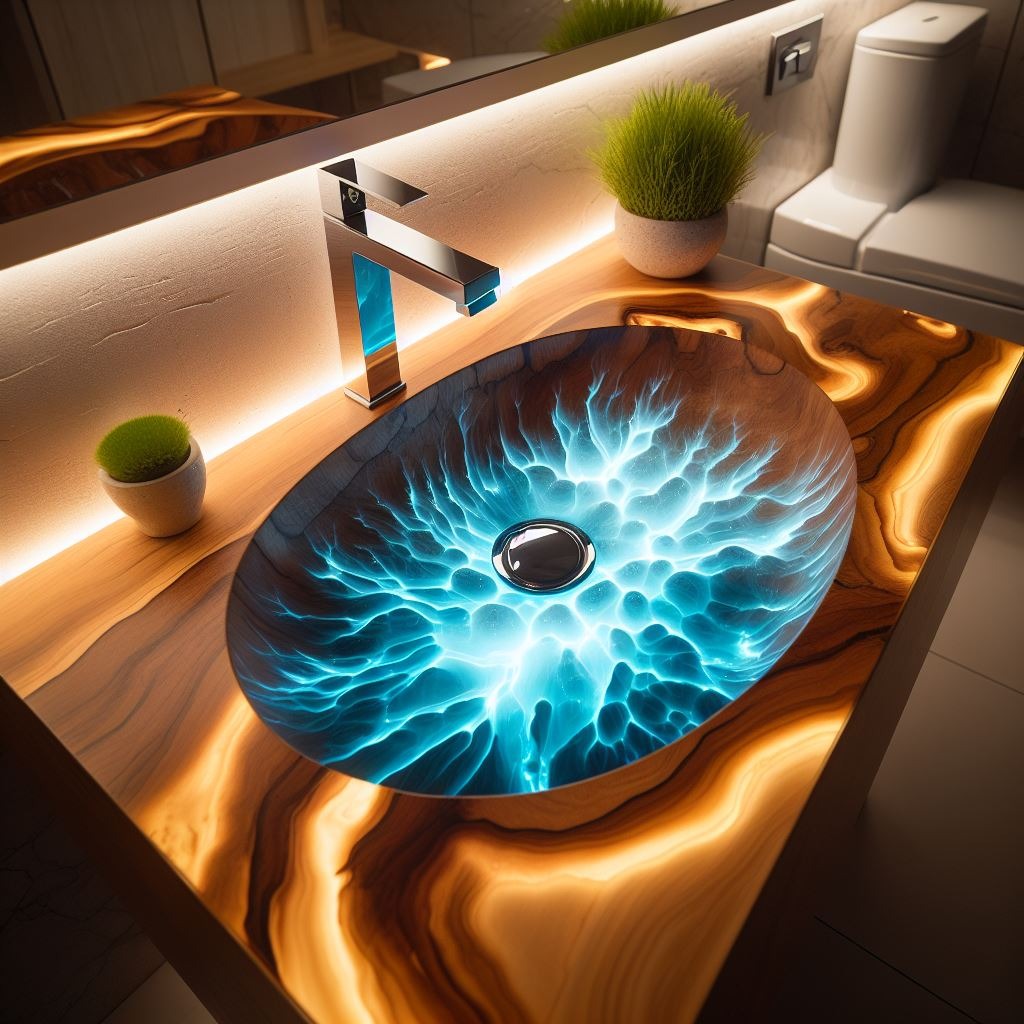
Proper installation is crucial to ensure the longevity and functionality of wooden sinks with epoxy resin. Before installation, it’s essential to ensure that the surrounding cabinetry and countertop are structurally sound and capable of supporting the weight of the sink.
Depending on the design and configuration of the sink, installation may require the expertise of a skilled carpenter or plumber. In some cases, additional support or reinforcement may be necessary to prevent sagging or instability.
When installing the sink, be sure to follow the manufacturer’s instructions and recommendations carefully. Use appropriate sealants and adhesives to create a watertight seal between the sink and countertop, preventing water damage and leaks.
After installation, allow adequate time for the sealants and adhesives to cure properly before using the sink. This helps to ensure a secure and durable bond, minimizing the risk of any issues or complications down the line.
The Future of Wooden Sinks and Epoxy
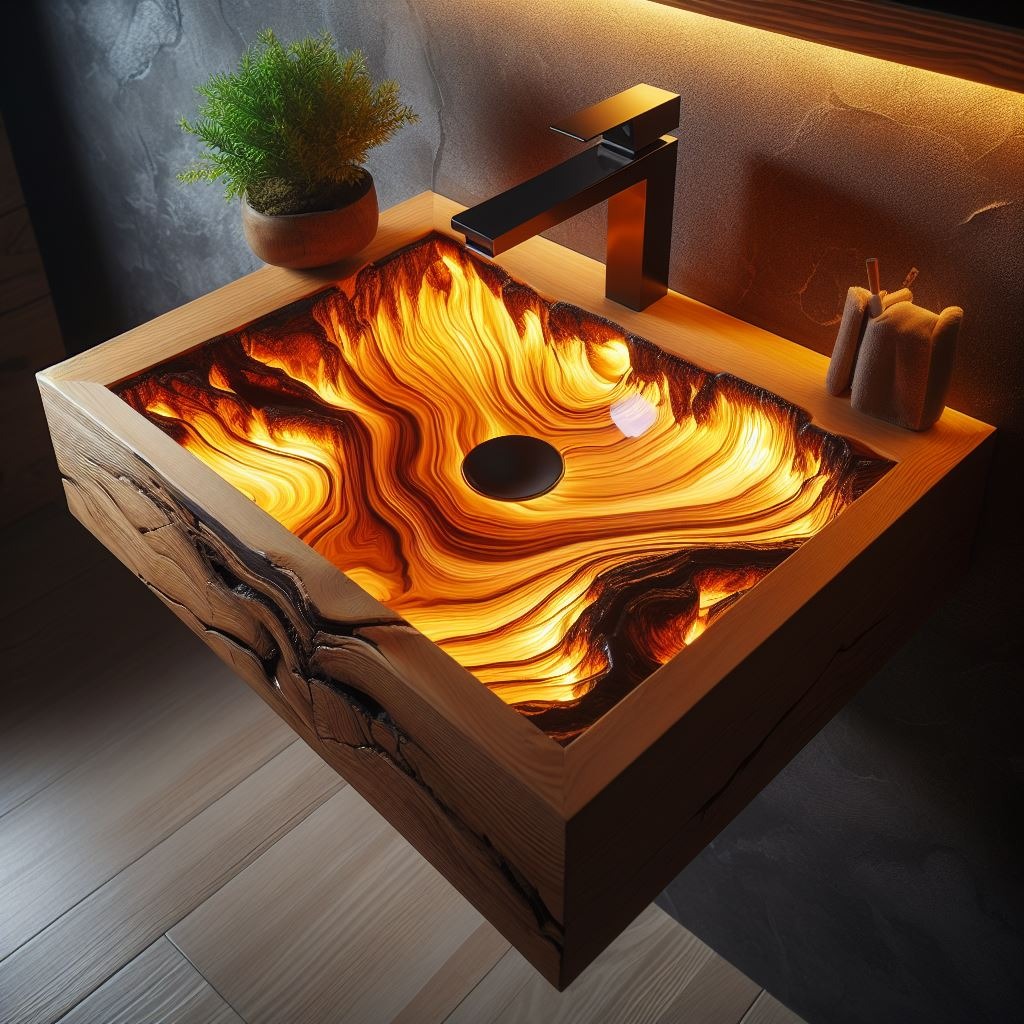
As the demand for sustainable and aesthetically pleasing design solutions continues to grow, the future of wooden sinks with epoxy resin looks promising. With advancements in technology and materials, designers and manufacturers are pushing the boundaries of creativity and innovation, exploring new possibilities for shape, form, and texture.
Moreover, as consumers become increasingly conscious of their environmental footprint, there is a growing appreciation for the natural beauty and sustainability of wood. Wooden sinks with epoxy resin offer a compelling alternative to traditional materials, combining elegance and durability with eco-friendly credentials.
In the years to come, we can expect to see even greater diversity and innovation in the design and construction of wooden sinks with epoxy resin. From sleek, minimalist designs to bold, artistic creations, these unique fixtures will continue to captivate and inspire homeowners and designers alike.
Inspirational Applications
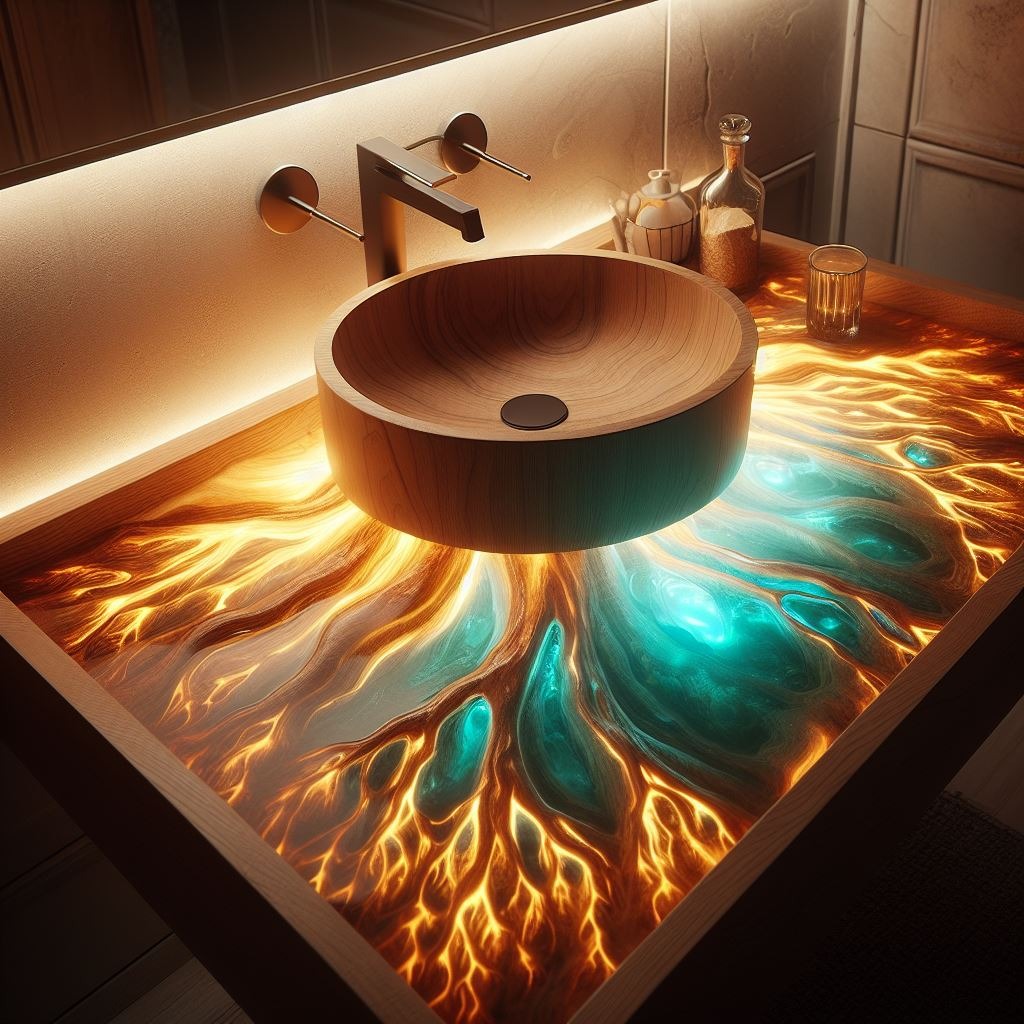
The versatility of wooden sinks with epoxy resin extends beyond traditional bathroom settings. Designers and homeowners alike are discovering innovative ways to incorporate these unique fixtures into a variety of spaces, from kitchens and wet bars to outdoor entertaining areas.
In kitchen design, wooden sinks with epoxy resin offer a striking focal point that seamlessly integrates with natural elements such as stone countertops and exposed wood beams. Whether used as a primary sink or as a statement-making prep sink, these fixtures add warmth and character to any culinary space.
In wet bar areas, wooden sinks with epoxy resin elevate the art of entertaining, providing a stylish and functional centerpiece for mixing cocktails and serving drinks. The translucent nature of epoxy resin lends itself to creative lighting effects, creating a captivating ambiance that enhances the overall dining experience.
Even outdoor spaces can benefit from the beauty and durability of wooden sinks with epoxy resin. Whether installed in a rustic outdoor kitchen or as part of a luxurious spa retreat, these fixtures bring a touch of elegance and sophistication to alfresco entertaining areas.
Addressing Common Concerns
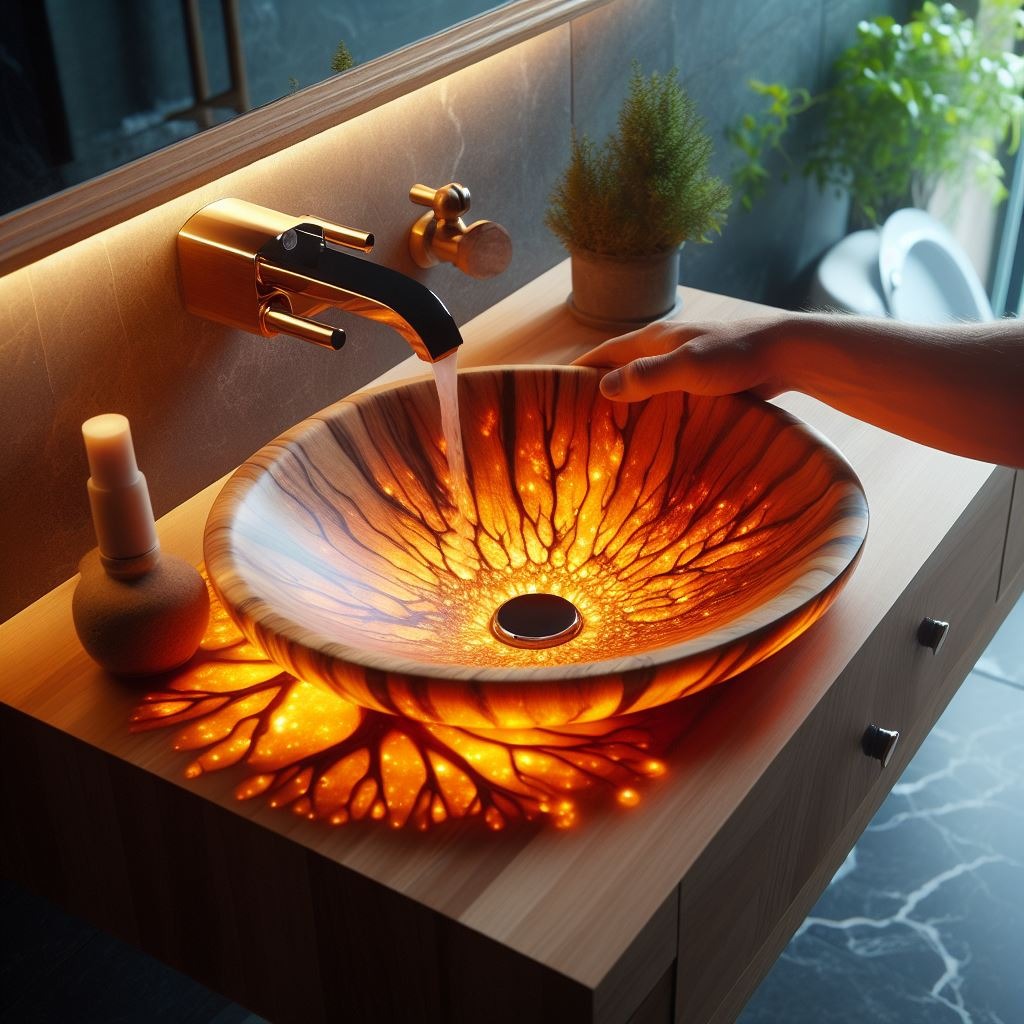
Despite their many benefits, some homeowners may have reservations about incorporating wooden sinks with epoxy resin into their homes. Common concerns include durability, maintenance, and cost.
While it’s true that wooden sinks with epoxy resin require proper care and maintenance to ensure their longevity, the same can be said for any high-quality fixture. With regular cleaning and occasional treatment, these unique sinks can provide years of reliable service.
As for cost, wooden sinks with epoxy resin may initially require a larger investment compared to mass-produced alternatives. However, when considering their durability, sustainability, and aesthetic appeal, many homeowners find that the long-term benefits far outweigh the upfront expense.
In terms of durability, wooden sinks with epoxy resin are surprisingly resilient when properly cared for. The epoxy resin serves as a protective barrier, sealing the wood and guarding against moisture damage and staining. With proper installation and maintenance, these fixtures can withstand the rigors of daily use with ease.
Finding Inspiration
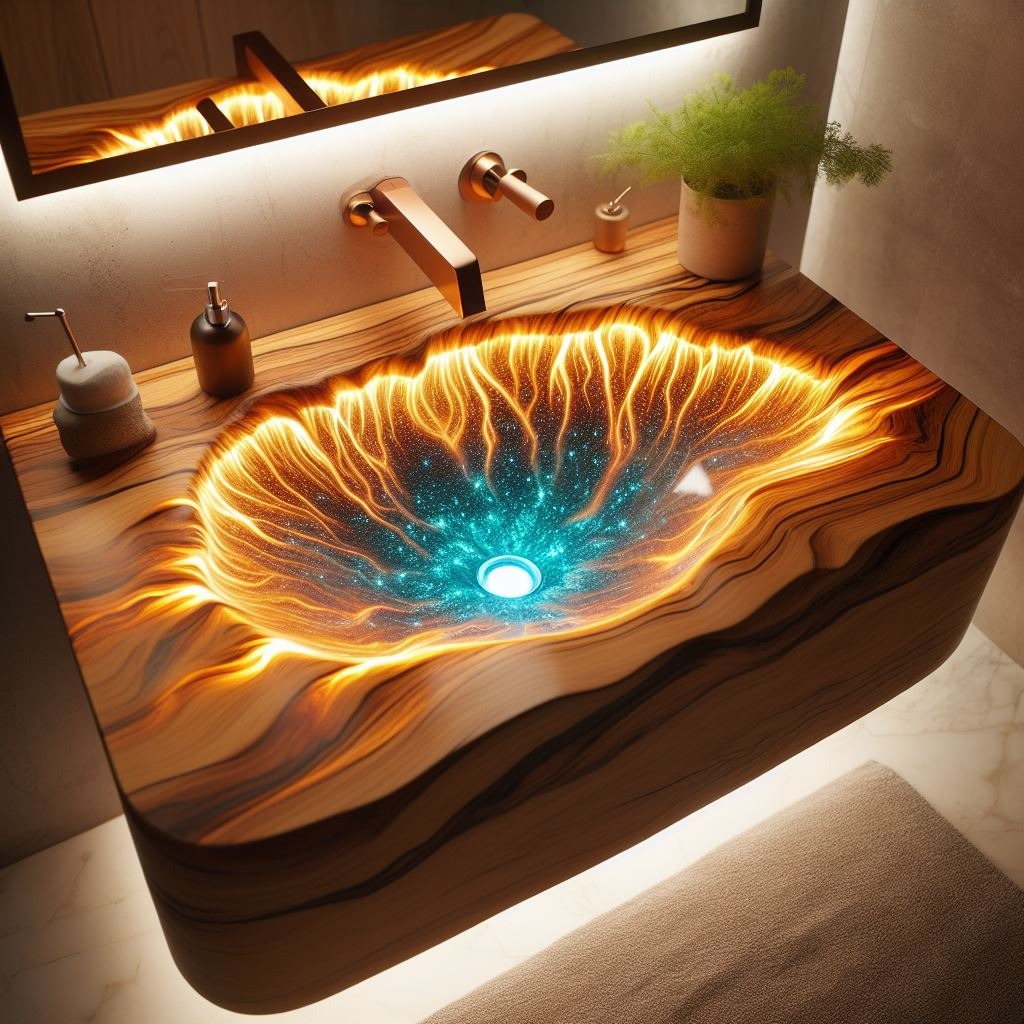
For homeowners and designers seeking inspiration for incorporating wooden sinks with epoxy resin into their spaces, the possibilities are virtually limitless. From browsing design magazines and websites to visiting local showrooms and home improvement stores, there are countless sources of inspiration to draw from.
Additionally, social media platforms such as Instagram and Pinterest offer a wealth of curated content showcasing the latest trends and design ideas. By following hashtags such as #woodensinks or #epoxyresin, users can discover a diverse array of stunning installations and creative applications from around the world.
Furthermore, working with a reputable designer or contractor can provide invaluable guidance and expertise when planning a renovation or new construction project. These professionals can offer personalized recommendations and help bring your vision to life with expert craftsmanship and attention to detail.
Exploring Trends and Innovations
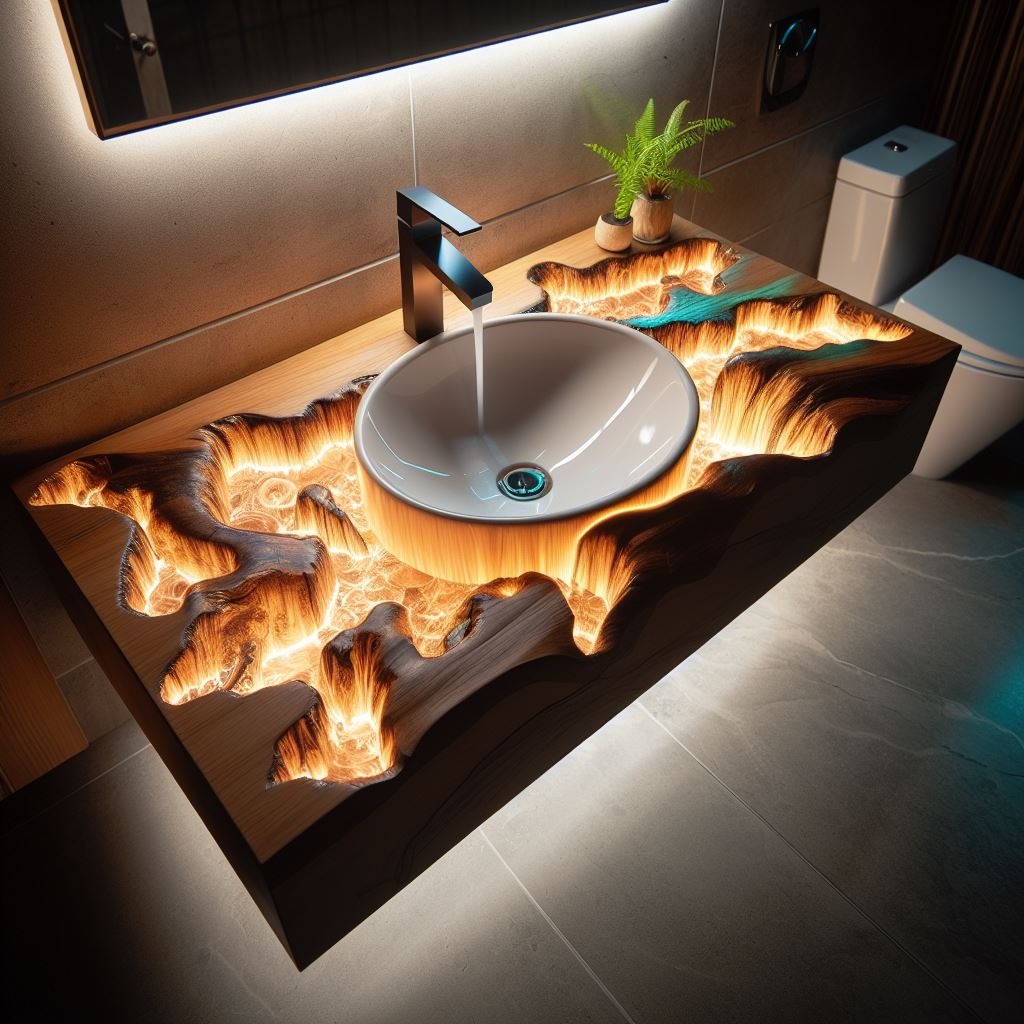
As the popularity of wooden sinks with epoxy resin continues to rise, designers and manufacturers are constantly exploring new trends and innovations to push the boundaries of creativity and functionality.
One emerging trend is the use of live-edge wood in sink design. Live-edge wood, characterized by its natural, irregular edges that follow the shape of the tree’s trunk, adds a rustic yet contemporary touch to wooden sinks. When combined with epoxy resin, live-edge sinks showcase the raw beauty of wood in its most natural form, creating stunning visual contrasts and textures.
Another innovative approach is the incorporation of recycled materials into sink design. By repurposing reclaimed wood and other eco-friendly materials, designers can create sustainable yet stylish fixtures that appeal to environmentally conscious consumers. Whether it’s salvaged barn wood or reclaimed wine barrels, these unique materials add a sense of history and character to wooden sinks with epoxy resin.
In terms of design aesthetics, minimalist and Scandinavian-inspired styles are gaining popularity in contemporary interiors. Clean lines, simple shapes, and neutral color palettes create a sense of calm and serenity, making wooden sinks with epoxy resin ideal for modern, zen-like bathrooms and spa retreats. Additionally, the use of contrasting materials such as matte black fixtures or concrete countertops adds a touch of industrial chic to these understated designs.
Addressing Installation Challenges
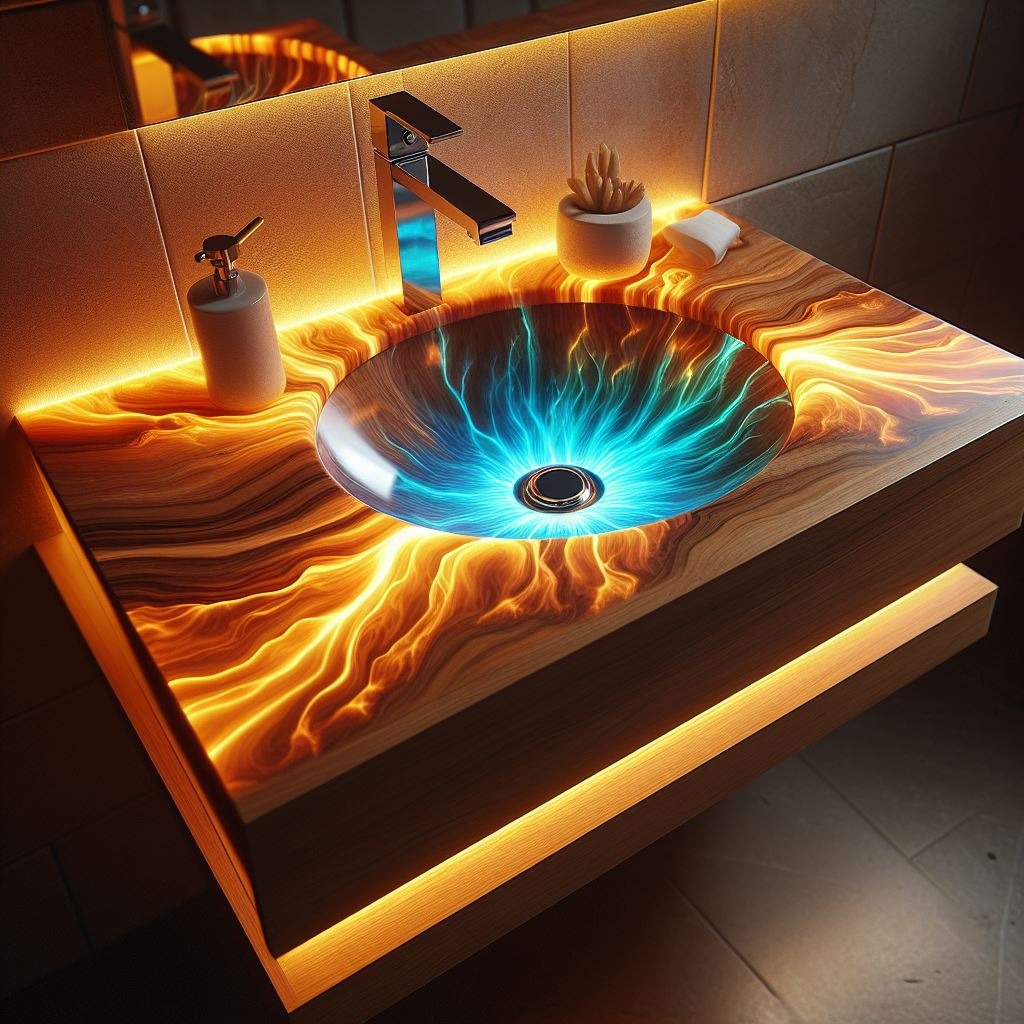
While wooden sinks with epoxy resin offer numerous benefits in terms of aesthetics and functionality, they also present unique challenges when it comes to installation. Unlike traditional sinks made of ceramic or stainless steel, wooden sinks require careful attention to detail and specialized techniques to ensure a proper fit and seal.
One common challenge is achieving a watertight seal between the sink and countertop. Because wood is a natural material that can expand and contract with changes in temperature and humidity, it’s essential to use flexible sealants and adhesives that can accommodate these fluctuations without compromising the integrity of the seal.
Additionally, proper ventilation is crucial to prevent moisture buildup and mold growth in enclosed spaces such as vanity cabinets. Installing a vent fan or leaving a gap between the sink and surrounding cabinetry can help promote airflow and prevent potential issues down the line.
Another consideration is the weight of the sink, especially in installations where the countertop is cantilevered or supported by brackets. Reinforcing the underside of the countertop with additional bracing or support beams can help distribute the weight evenly and prevent sagging or structural damage over time.
The Importance of Quality Craftsmanship
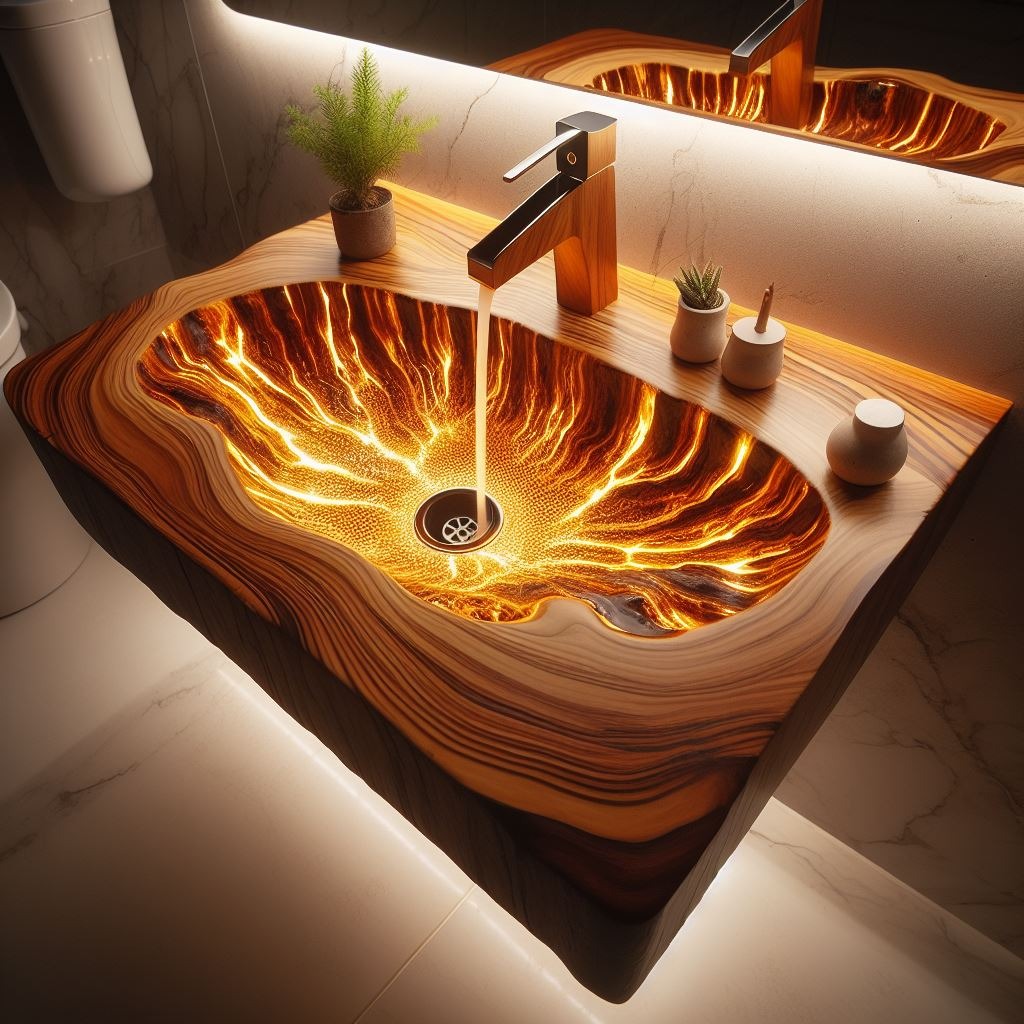
When it comes to wooden sinks with epoxy resin, quality craftsmanship is paramount. From the selection of premium hardwoods to the precision of the epoxy application, every step of the manufacturing process plays a crucial role in ensuring the durability and beauty of the finished product.
Experienced artisans and craftsmen combine traditional woodworking techniques with modern tools and technologies to create wooden sinks that are both functional and aesthetically pleasing. Attention to detail, meticulous finishing, and rigorous quality control measures are hallmarks of reputable manufacturers who take pride in their workmanship.
Furthermore, choosing a sink from a trusted manufacturer with a proven track record ensures peace of mind and confidence in the product’s performance. Reputable manufacturers stand behind their products with comprehensive warranties and excellent customer service, providing support and assistance throughout the lifespan of the sink.
Conclusion
In conclusion, wooden sinks with epoxy resin offer a compelling combination of beauty, durability, and sustainability that makes them a popular choice for modern interiors. From their timeless appeal and customizable design options to their versatility and eco-friendly credentials, these unique fixtures embody the essence of contemporary luxury and timeless elegance.
As designers and homeowners continue to seek innovative and environmentally conscious design solutions, wooden sinks with epoxy resin are poised to remain a beloved feature of interior spaces for years to come. With their ability to seamlessly integrate tradition and innovation, craftsmanship and technology, these exquisite fixtures add a touch of sophistication and warmth to any home or commercial environment.

